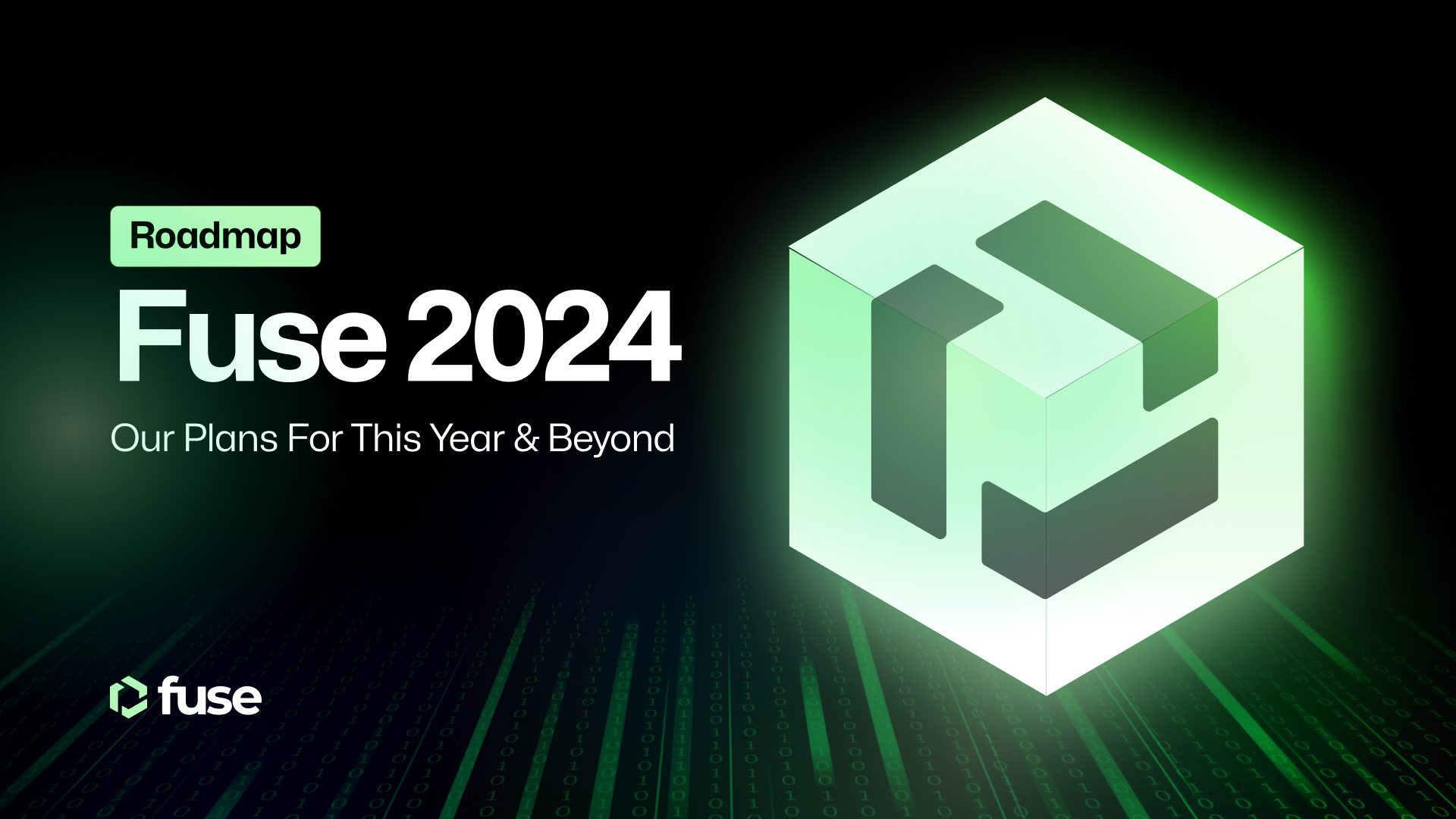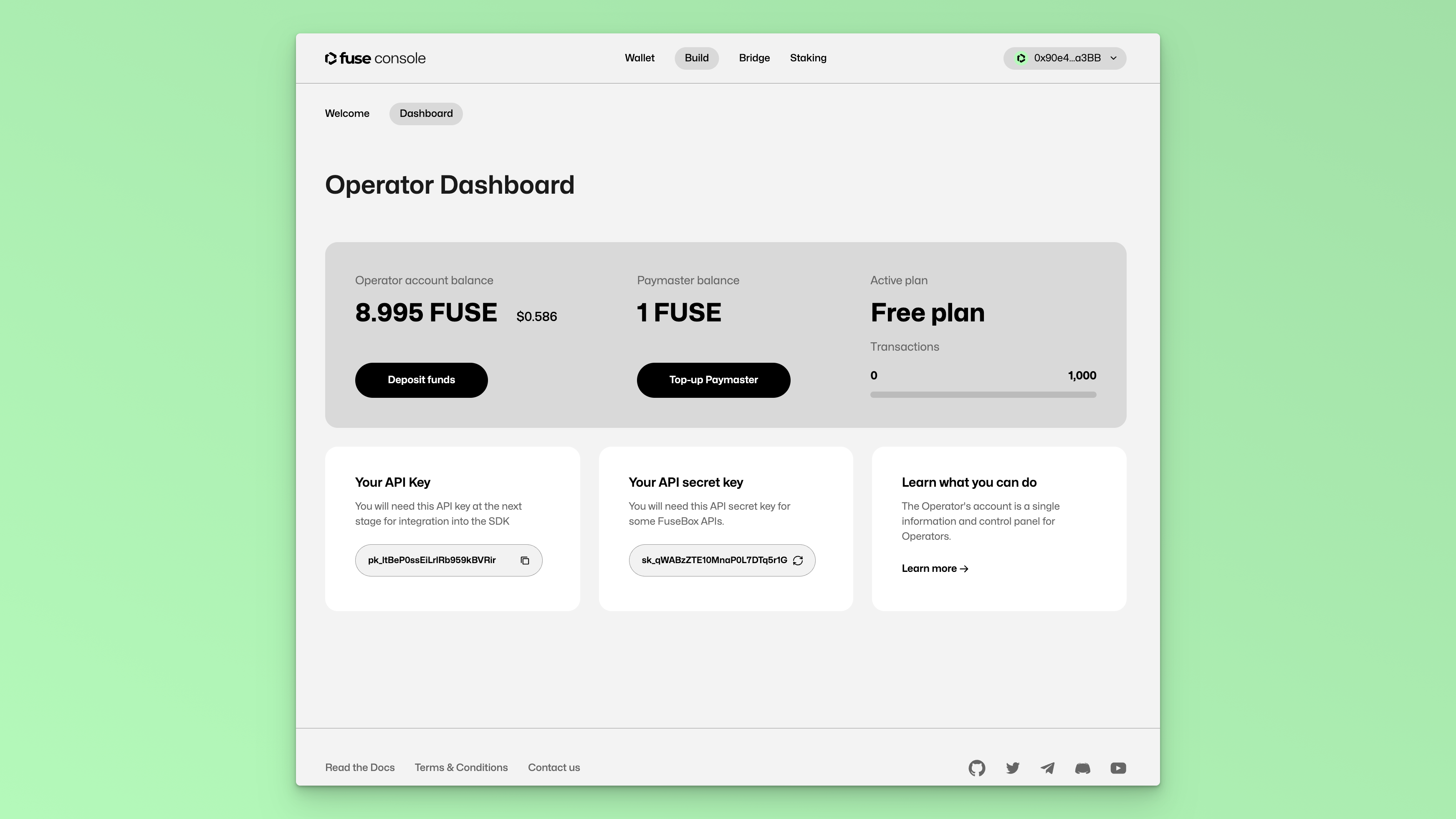Fuse Network: Vision for 2024

Roadmap for 2024
1. Migration to L2 with Polygon CDK
Overview: Our journey in 2024 begins with a pivotal move towards Layer 2 (L2) scalability. We drive this transition to offer alternatives to traditional payment providers with low transaction costs, instant clearing, high throughput, and decentralization.
To achieve a Visa-level scale by the end of 2024, we have outlined a strategic plan that involves several crucial steps. Initially, we aim to deploy a ZK roll-up solution onto Fuse's existing Layer 1 (L1) infrastructure, enhancing its scalability and performance. Concurrently, we are working on integrating seamless L1 to L2 communication into our products, enabling efficient data transfer between the two layers.
As a pivotal milestone in our roadmap, we plan to migrate towards ZK Validium, a more advanced and scalable solution, to bolster the network's capabilities further and support the growing demand.
Learn more about the migration to Polygon CDK here.
2. New FuseBox & Developer Console
Overview: The New FuseBox represents our middleware stack, providing developers and operators with essential network services and tools.
Native account abstraction is set to empower newcomers to the world of Web3 by equipping them with the essential tools to craft engaging digital experiences for their clientele. This innovation combines native contract factories and wallet-as-a-service APIs to collaborate and synergize seamlessly, streamlining integration with a network of account abstraction service providers.
We are dedicated to fortifying our APIs, enhancing SDKs for web and mobile development, and simplifying the onboarding process to Web3. Over the coming year, expect our SDKs to exhibit heightened stability, robustness, and fault tolerance. Furthermore, we are committed to providing extensive code examples and comprehensive device support.
Recurring payments in blockchain smart contracts offer a powerful combination of automation, trust, cost-efficiency, security, and global accessibility, making them highly desirable and valuable for various industries and use cases. Fuse wants to be the first to bring this useability to the blockchain and businesses.
Private transactions are essential for businesses using blockchain smart contracts for payments and finance because they provide a layer of confidentiality, security, and compliance necessary to protect sensitive financial data, maintain trust, and gain a competitive edge in the increasingly digital and interconnected business landscape.
Our overarching goal is to ensure that our SDKs grant effortless access to all network services, facilitating maximum interoperability with third-party services such as authentication and on-ramps.

3. Introducing a Consumer Pricing Model/Subscription
Emulating successful Web2 business models for blockchain adoption empowers businesses by offering user-friendly, trustworthy, scalable, cost-effective, and innovative solutions. Services like Stripe provide APIs and developer tools that simplify integration with various applications and websites.
Adopting a similar approach can make it straightforward for businesses to integrate blockchain technology into their existing systems with Fuse, encouraging wider adoption.
Operators, developers, and builders on Fuse must deposit 1000 Fuse to activate the free tier, with additional charges applied as needed. ERC-4337 powers this pricing model and offers a user-friendly payment experience.
4. Moving to a Deflationary Model - Tokenomics Changes
Overview: We have scheduled fundamental changes to implement in August 2024 for Fuse Network's tokenomics, including transitioning FUSE to a deflationary model, implementing fee burning, and establishing a maximum token supply.
Transparency: We will create interactive tokenomic dashboards to offer stakeholders real-time insights into the token's state and its broader impact on price.
Network Updates: Additional updates, such as the migration to Nethermind, the London fork for fee burning, and improvements in the fee structure, will support our migration to L2 and Fuse 2.0.
5. Operators, Businesses, & Developers on Fuse
Overview: In 2024, existing Operators will reach a significant milestone by serving the first 100,000 users. This year-long effort also includes introducing Console and FuseBox to enhance the capabilities of businesses building Web3 apps on Fuse.
We will onboard new operators and extend our reach to Latin America, Africa, UAE, and Asia markets, offering token-minting tools to empower them further.
6. Web3 Payments & DeFi Ecosystem
Overview: Our commitment to ecosystem growth includes better developer onboarding, hackathons, strategic partnerships, and joint offerings that benefit the Fuse community.
Grants & Funding: The Fuse Ignite and Web3 Business Grants program will expand its support for recipients and launch its first products.
Staking and Token Holder Activities: Leveraging Quest integrators and community engagement to enhance participation.
Global Events: Powering payments at the Mystic Valley Festival, hackathons, and regional gatherings will showcase Fuse's strength worldwide.
Ambassadors: Expanding our reach, particularly in new markets like Latin America.
Analytics: Transparency and data tracking improvements with an enhanced dashboard in Q3-Q4.
7. New Real-World Asset Types
The launch of a Layer 2 blockchain by Fuse in collaboration with the Polygon CDK is a significant milestone that empowers the platform to concentrate its efforts on facilitating onboarding teams working on emerging real-world assets and DePIN projects.
Overview: By leveraging the scalability and efficiency of Layer 2 solutions, Fuse enhances its capacity to handle a larger volume of transactions with lower costs and reduced environmental impact.
Stablecoins & Composable Yield: Stablecoins and composable yield products address stability concerns, enhance financial inclusion, reduce intermediaries, offer innovative investment opportunities, and provide security and global accessibility—all of which can collectively attract new customers to the Fuse blockchain.
Key Objectives: Onboard and provide funding and support to projects building solutions that leverage RWA and DePIN technologies that require micropayments and non-custodial wallets to solve real-world problems.
Conclusion
Fuse Network's roadmap for 2024 is an ambitious and holistic approach to transforming Web3 payments and decentralized finance. We are committed to providing innovative, secure, accessible solutions while fostering a vibrant and inclusive community. As we navigate this exciting year, we invite you to join us on this journey to redefine the future of finance with Fuse Network.